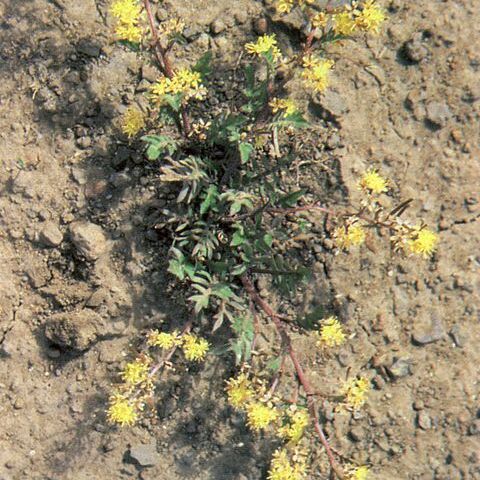Perennial 1–4 dm, usually with several ascending branches from near the base, the stem and lower surface (or at least the midrib) of the lvs sparsely to densely beset with small, vesicular, hemispherical trichomes that may be collapsed and scale-like in dried specimens; lvs all cauline, 3–8 × 0.5–1.5 cm, oblanceolate or oblong, auriculate-clasping or not, pinnatifid, the segments commonly 5–7 pairs, spreading or ascending, usually obtuse, entire or with a few teeth, separated by rounded sinuses; lateral sep somewhat saccate at base; pet light yellow, 3.5–5.5 mm, surpassing the sep; mature pedicels slender, ascending to recurved, 5–9 mm; frs subterete, 5–12 × 1.5–2 mm, straight or upcurved, often beset with vesicular trichomes, abruptly narrowed to a slender stylar beak 1.3–2.5 mm; 2n=16. Moist, especially sandy soil, fields, and shores; Ill. to Alta. and Wash., s. to Ark., Tex., and Calif., and occasionally adventive eastward. Apr.–July. (Radicula s.)

